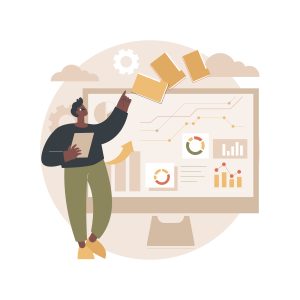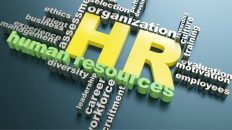In today’s ever-changing work environment, businesses are increasingly understanding the importance of people analytics. McKinsey reports that adopting people analytics can significantly improve recruitment efficiency by 80%, decrease employee turnover by 50%, and enhance overall business productivity by 25%. As organizations adapt to the challenges of the future of work, leveraging the insights from data becomes crucial for HR leaders to build resilient and effective workforces.
The Importance of People Analytics in HR
People analytics, also known as workforce analytics, involves using data to gain insights into various aspects of human resource management. This data-driven approach empowers HR professionals to make informed decisions, optimize processes, and align strategies with organizational goals. Let us explore the key reasons why people analytics is becoming increasingly important for HR:
Enhancing Talent Acquisition
People analytics streamlines the recruitment process by offering insights into the effectiveness of sourcing channels, candidate selection criteria, and time-to-fill positions. By optimizing these aspects, HR can adopt a more efficient and targeted approach to hiring, ensuring the acquisition of high-quality talent. For example, analysing data may reveal that candidates from professional networking platforms, such as LinkedIn, exhibit better long-term retention, prompting HR to invest more resources in targeted outreach on these platforms.
Also read: Ratika Gandotra joins SolarEdge Technologies as Sr. Director -Head of HR and Talent Management India
Reducing Employee Turnover
A significant advantage of people analytics is its ability to help HR professionals reduce employee turnover. By analysing historical turnover data and identifying contributing factors, HR can implement targeted retention strategies. This proactive approach allows for addressing concerns, enhancing job satisfaction, and ultimately reducing turnover rates.
Fostering Employee Experience and Engagement
Approximately 42% of organizations consider employee experience and engagement as a top functional area where people analytics is crucial. By measuring employee engagement and satisfaction through data-driven insights, HR can create initiatives that enhance the overall employee experience. For instance, identifying a drop in engagement due to a recent software change can lead to the implementation of targeted interventions, such as communication strategies and training programs, to address specific concerns.
People analytics stands out as one of the most essential HR technologies that will shape the future of work.

Identifying and Closing Skills Gap
People analytics enables HR teams to analyse employee skills and competencies, identifying gaps within the workforce. Targeted training and development programs can then be implemented to upskill employees and create a continuous performance management system. AI-based people analytics platforms further automate skills gap analysis, providing personalized learning recommendations to close gaps effectively.
Trimming Overhead Costs
Analysing the efficiency of various HR processes and initiatives, people analytics helps identify areas of inefficiency, optimizing workflows, reducing unnecessary costs, and enhancing overall cost-effectiveness. For example, analysing workspace utilization data and employee productivity metrics may lead to implementing flexible work policies, reducing the need for large office spaces and cutting associated overhead costs.
Crafting Future-Ready HR Strategy
Providing a forward-looking perspective, people analytics enables HR to anticipate future workforce trends and challenges. This foresight empowers the development of a future-ready HR strategy aligned with the evolving needs of the organization.
Making Informed Decisions Through Data
Leveraging data-driven insights, HR professionals can make informed and objective decisions across various aspects of human resource management. This ensures that HR strategies and initiatives are aligned with evidence-based reasoning.
Advancing DEIB Goals
By analysing workforce demographics, people analytics helps organizations track progress toward diversity, equity, inclusion, and belonging (DEIB) goals. It identifies areas needing attention, guides targeted initiatives and ensures a more inclusive and equitable workplace.
The Future of People Analytics in HR
Experts and leaders agree that people analytics will intensify in the coming decade. Organizations will heavily invest in gathering insights from data to improve critical processes like recruitment, engagement, learning, and retention. A notable shift from descriptive and diagnostic use of people analytics to predictive and prescriptive usage is anticipated. However, alongside these innovations, HR must ensure robust data privacy and protection mechanisms.
People analytics stands out as one of the most essential HR technologies that will shape the future of work. Its effective implementation empowers HR professionals to make evidence-based decisions for organizational success. To maximize the benefits of people analytics, it is crucial not only to analyse employee attributes and relationships but also to consider employee interactions. This comprehensive approach enables HR teams to identify patterns, understand communication dynamics, and foster a collaborative work environment, ultimately unlocking the full potential of data in HR.
Stay connected with us on social media platforms for instant updates click here to join our LinkedIn, Twitter & Facebook






















